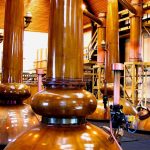Synergie Environ worked with the Kinloch Castle Friends Association and other stakeholders to assess low carbon energy generation options for the renovated Castle and wider Isle of Rum. With our directors hailing from the Western Isles, Synergie have a particular affinity for local energy systems in remote areas of Scotland.
Synergie’s engineers reviewed the capability of the existing energy infrastructure on the Island to meet future demands, focussing particularly on how the proposed expansion and renovation of Kinloch Castle into a bespoke hotel would affect energy requirements.
Having calculated the shortfall of the existing system, our team analysed a range of technologies from heat pumps, batteries and solar PV to Passivhaus infrastructure to establish the optimum low carbon energy solution versus business as usual (diesel generators and hydroelectric) to meet future demands on Rum.
The outputs of the work included: an assessment of current energy usage, modelling of predicted future demands, an appraisal of various technology options and an assessment of the ability of any new infrastructure to integrate with the existing micro grid on the Island. This allowed Synergie to produce a comprehensive local energy plan for the Island and Castle, which supported both the Islands ambition for economic growth and the Scottish Government’s carbon targets and policies. Against business as usual, savings of £56,000 per annum were identified and our solution produced a carbon saving of 400 tonnes CO2e per annum.








